What Is Pervasive Developmental Disorder
Understanding Autism Spectrum Disorder: The Modern View of Pervasive Developmental Disorders
From Pervasive Developmental Disorder to Autism Spectrum Disorder
Pervasive Developmental Disorder (PDD) was once the term used to describe a range of developmental challenges affecting social interaction, communication, and behavior in children. Since 2013, however, this classification has evolved into what is now known as Autism Spectrum Disorder (ASD), a broad and nuanced diagnostic category encompassing conditions formerly described as PDD, including autism, Asperger’s syndrome, and childhood disintegrative disorder. This article explores what PDD entails under the modern ASD umbrella, detailing symptoms, causes, diagnosis, treatment options—including behavioral therapies like Applied Behavior Analysis (ABA)—and the ongoing journey toward individualized support and understanding.
Defining Pervasive Developmental Disorder Within the Autism Spectrum
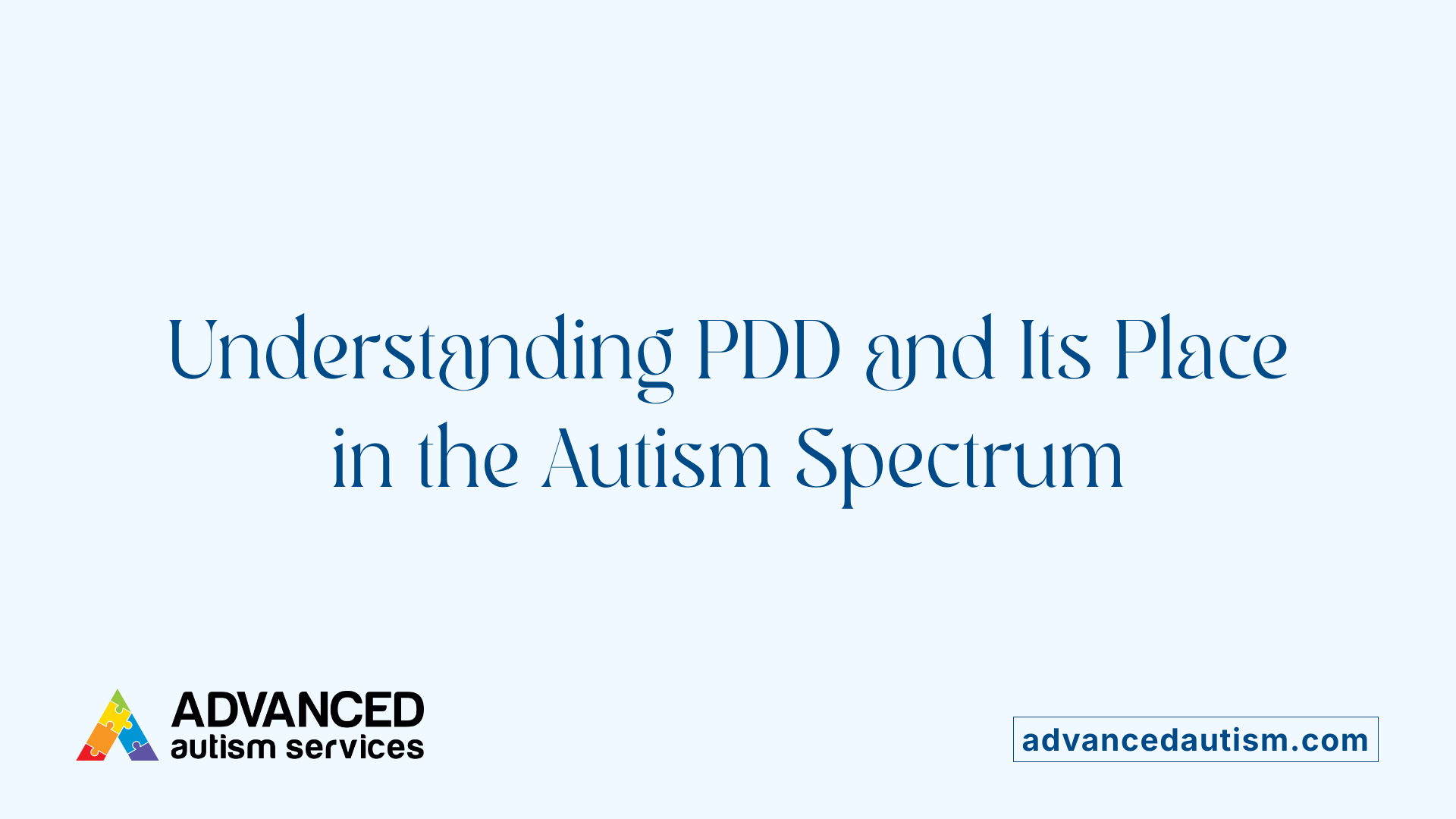
What is Pervasive Developmental Disorder?
Pervasive Developmental Disorder (PDD) was historically used to describe a group of neurodevelopmental conditions marked by significant delays and difficulties in social interaction, communication, and behavior. Children with PDD often showed challenges in relating to others, using language effectively, and displaying repetitive or ritualistic behaviors.
How Does PDD Relate to Autism Spectrum Disorder?
Since 2013, PDD is no longer an independent diagnostic category. Instead, it falls under Autism Spectrum Disorder (ASD), which presents a spectrum of symptoms and severity ranges. This transition aimed to eliminate confusion and create a unified framework capturing the diversity of presentations seen in these developmental conditions.
What Were the Subtypes Previously Classified Under PDD?
Previously, PDD included several subtypes such as:
- Autistic Disorder: Classic autism with significant communication and social impairments.
- Asperger’s Syndrome: Characterized by social challenges without significant language delay.
- Childhood Disintegrative Disorder: Marked by late regression in language and social skills after normal development.
- PDD-Not Otherwise Specified (PDD-NOS): For individuals with some but not all features of autism or Asperger’s, often representing atypical or subthreshold symptoms.
How Did Diagnostic Criteria Change with the DSM-5?
The DSM-5 combined these subtypes into a single diagnosis called Autism Spectrum Disorder (ASD). This spectrum-based approach emphasizes that affected individuals may experience overlapping symptoms and varying degrees of severity rather than fitting into distinct categories. This shift helps guide personalized assessment and treatment plans tailored to each person’s unique developmental profile.
Recognizing Symptoms: What to Look For in PDD/ASD
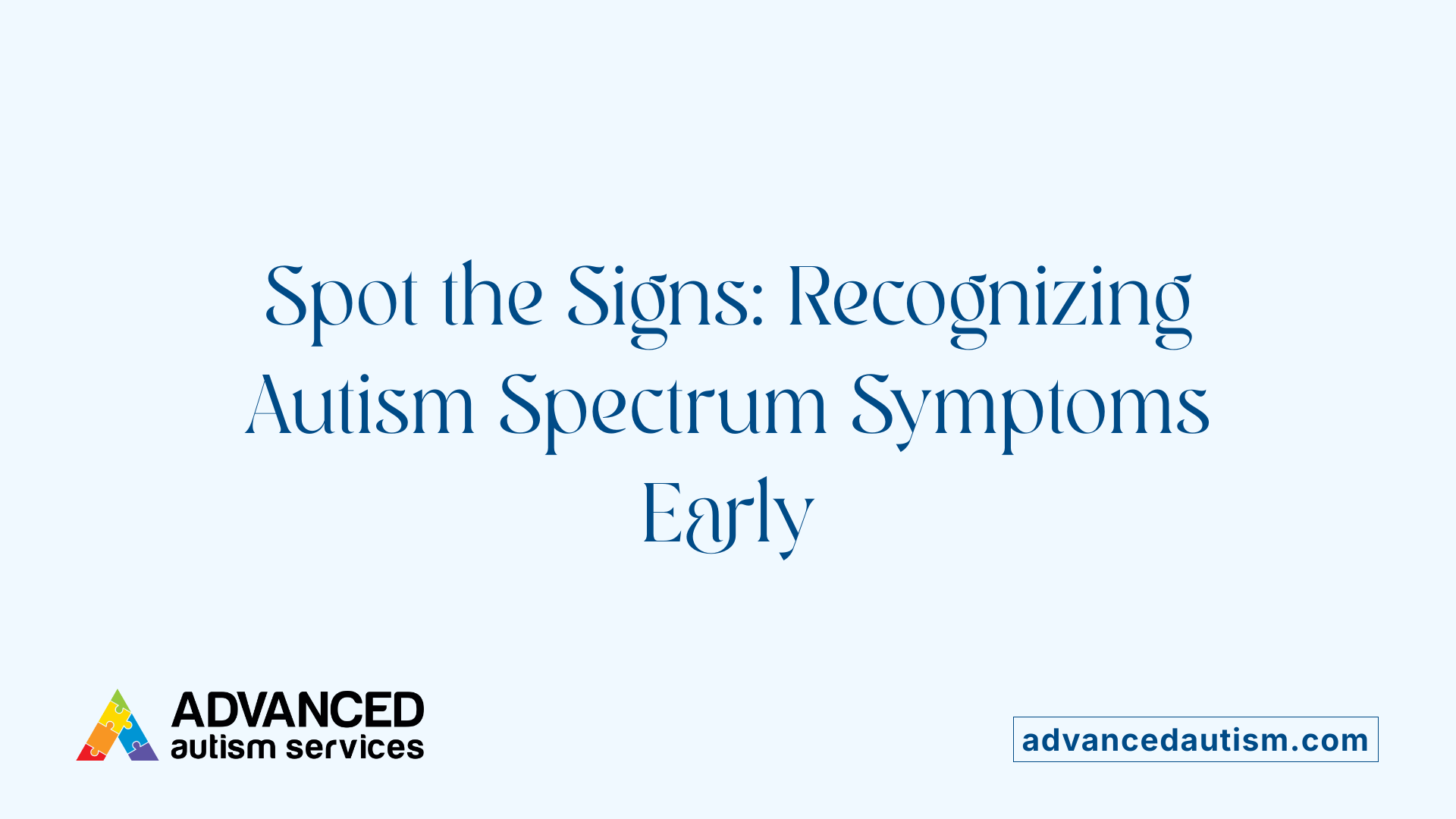
What Are Typical Symptoms of PDD/ASD?
Symptoms of Pervasive Developmental Disorder, now encompassed under Autism Spectrum Disorder (ASD), primarily affect communication and social interaction. Individuals may experience difficulties with both verbal and non-verbal communication, such as delayed speech or unusual speech patterns.
How Do Symptoms Vary Among Individuals?
The range and intensity of symptoms can vary greatly. Some people may show mild social challenges, while others have severe impairments that affect daily living. This variability is why ASD is described as a spectrum.
What Early Childhood Signs Should Be Noticed?
Signs typically emerge before age three and can include delayed language development, limited or no eye contact, difficulty understanding social cues, and preference for solitary play. Additionally, children might display unusual play activities and have trouble adapting to changes in routine.
How Does PDD/ASD Affect Communication and Social Interaction?
Individuals often struggle to relate to others or respond to social gestures like smiling or making eye contact. They may not engage in typical back-and-forth conversations, showing challenges in both expressing and interpreting emotions.
What Behavioral Characteristics Are Common?
Repetitive behaviors such as hand-flapping, rocking, or lining up objects are frequently observed. Resistance to changes in routine, intense focus on specific interests, and difficulties with emotional regulation can also be present.
These symptoms collectively impact daily functioning but with early recognition and tailored support, individuals with PDD/ASD can improve social skills and communication over time.
Causes and Risk Factors: Genetics and Beyond
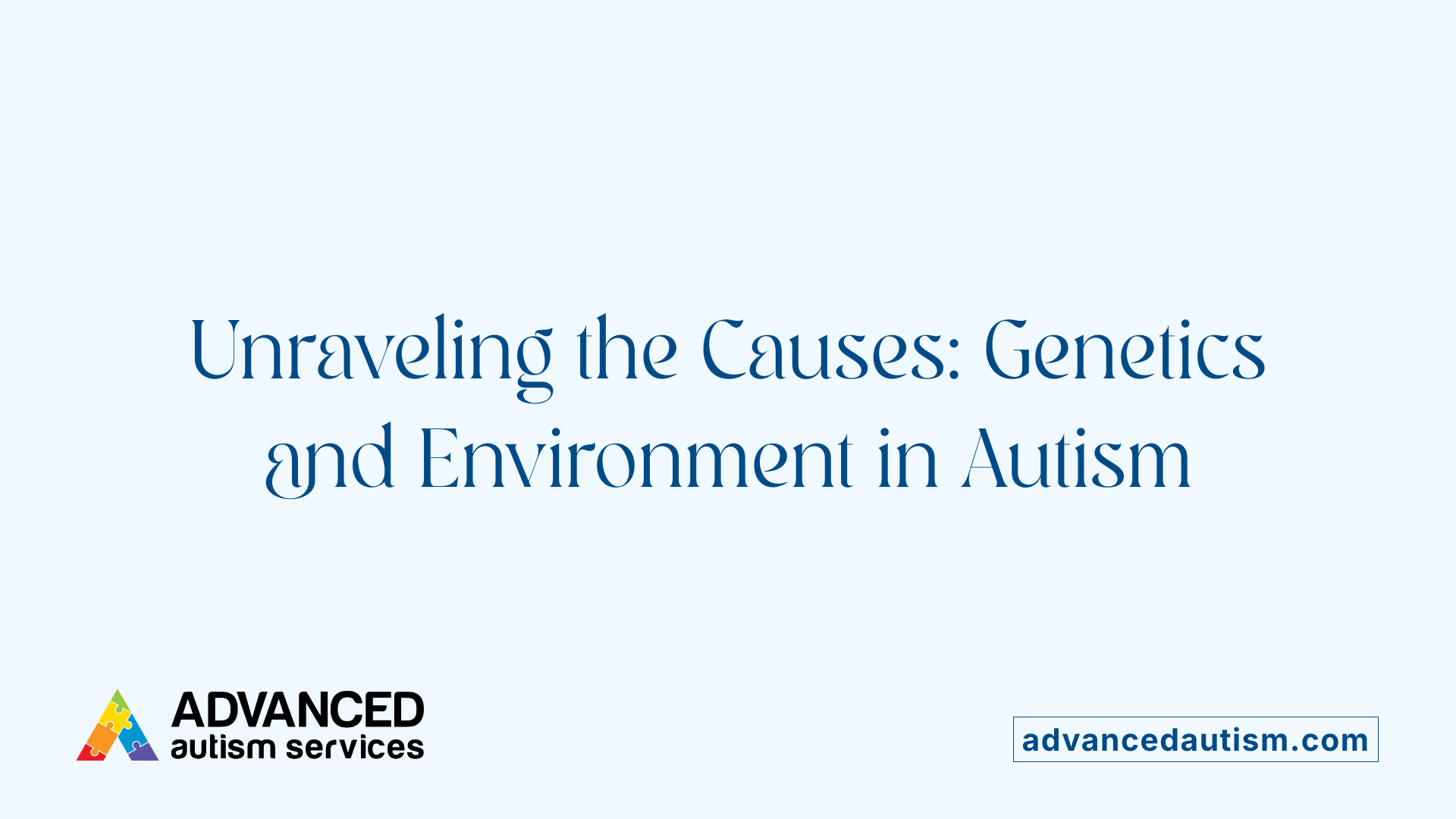
What causes PDD/ASD?
Pervasive developmental disorder, now classified as autism spectrum disorder (ASD), arises from a complex interplay of genetic and environmental factors. Genetic influences play a significant role, involving a combination of multiple genes and mutations that affect brain development and function. While no single gene causes ASD, patterns in families suggest heredity as a major contributor.
Genetic influences on PDD/ASD
Genes implicated in ASD affect neural connectivity, communication, and social behavior. Some individuals with ASD have identifiable genetic syndromes such as fragile X syndrome—a common inherited cause of intellectual disability—and Down syndrome, which also carries an increased risk for autism traits. These genetic conditions highlight the biological underpinnings of ASD susceptibility.
Environmental risk factors
Environmental influences before and during birth also impact ASD risk. Factors include maternal health during pregnancy, exposure to environmental contaminants, advanced parental age (particularly fathers), and complications during birth. These elements may interact with genetic predispositions to affect neurodevelopmental outcomes, increasing the likelihood of ASD.
Current understanding of causes
Modern research supports that ASD results from a multifactorial origin rather than a single cause. Although vaccines have been disproven as risk factors, ongoing studies focus on identifying how specific gene-environment interactions contribute to ASD's emergence. This understanding guides early diagnosis and personalized interventions aimed at improving quality of life for individuals on the spectrum.
Diagnostic Process: Behavioral Observations and Developmental History
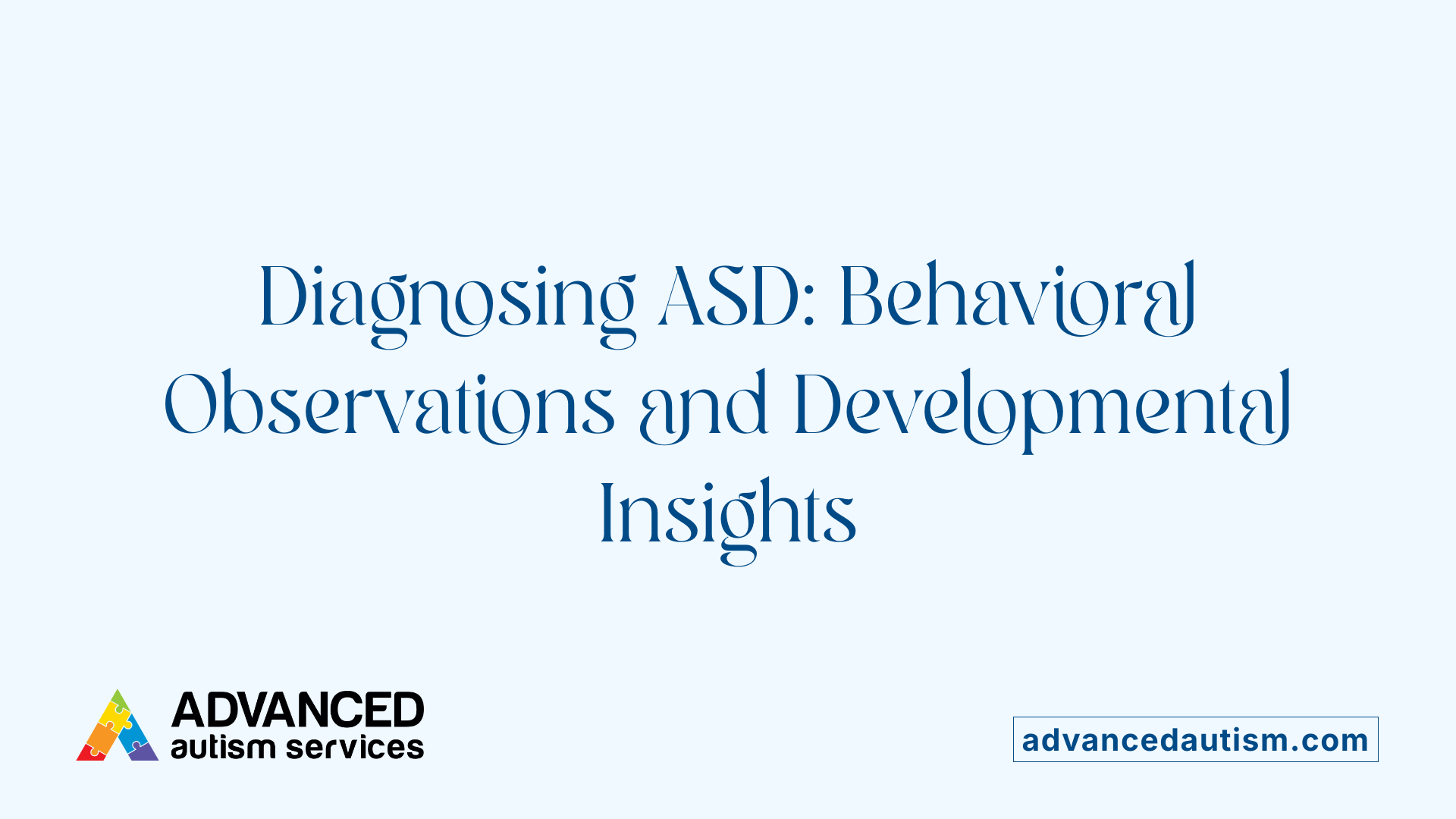
How is PDD/ASD diagnosed?
Diagnosing autism spectrum disorder (ASD), which includes conditions formerly categorized under pervasive developmental disorders (PDD), centers primarily on behavioral observation and detailed developmental history. There are no laboratory tests or biomarkers that can conclusively identify ASD, making behavioral assessments indispensable.
Methods of Diagnosing PDD/ASD
The process begins with a comprehensive evaluation involving clinical interviews and observations of the individual's social interaction, communication, and behavior patterns. Specialists look for symptoms such as difficulties in social communication, repetitive behaviors, and restricted interests that typically manifest before the age of three. A thorough developmental history is taken, often involving input from parents, caregivers, and teachers to provide insight into early behaviors and milestones.
Role of Specialists
Diagnosing PDD/ASD requires a multidisciplinary team of trained professionals, including child psychiatrists, developmental pediatricians, psychologists, and neurologists. These experts use their clinical expertise to distinguish ASD from other developmental disorders and to assess the severity and specific needs of each individual.
Tools and Assessments Used
Standardized diagnostic tools are pivotal in ensuring accurate evaluation. The Autism Diagnostic Observation Schedule (ADOS) is widely used to observe communication, social interaction, and play behaviors in structured settings. Other assessments may include developmental screening instruments and cognitive tests tailored to detect the spectrum nature of ASD.
Importance of Early Diagnosis
Early diagnosis, preferably by age three, is critical for introducing timely interventions that can improve social skills, communication, and adaptive behaviors. Accessing therapies early can positively influence long-term outcomes, facilitating better educational success and greater independence.
| Diagnostic Aspect | Description | Example/Tool |
|---|---|---|
| Behavioral Observation | Watching social interactions, communication, and repetitive behaviors | Autism Diagnostic Observation Schedule (ADOS) |
| Developmental History | Collecting detailed background from parents, caregivers, and educators about developmental milestones | Parent interviews and history forms |
| Specialist Roles | Involvement of multidisciplinary professionals to perform assessments and differential diagnosis | Child psychiatrist, neurologist, psychologist |
| Early Identification Focus | Emphasis on detecting symptoms before age three to enable prompt intervention | Routine developmental screenings at pediatric visits |
Applied Behavior Analysis (ABA): A Pillar of Autism Therapy
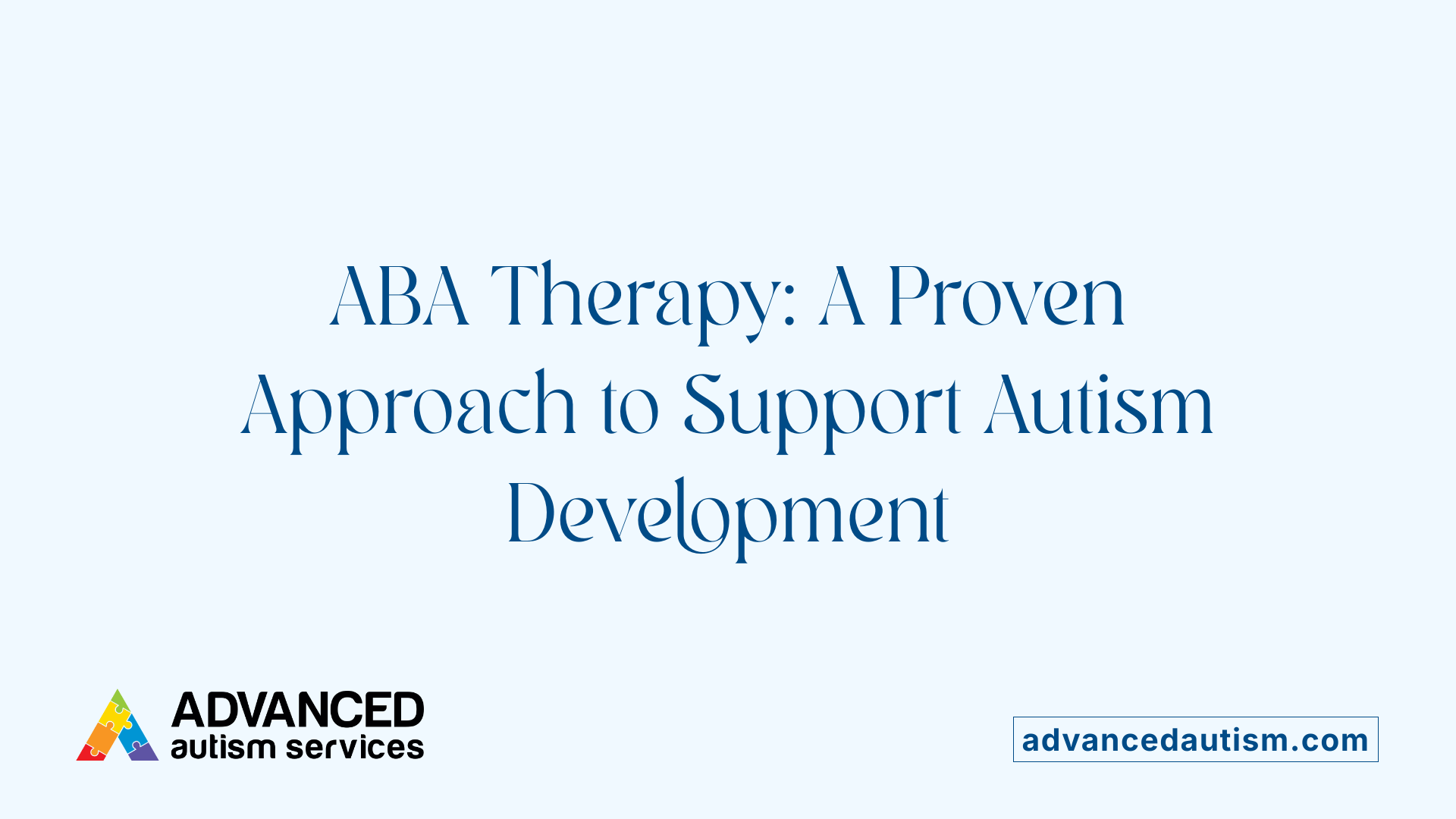
What is Applied Behavior Analysis (ABA) therapy and how is it used to support individuals with autism?
Applied Behavior Analysis (ABA) therapy is an evidence-based behavioral intervention widely recognized as a cornerstone in the treatment of autism spectrum disorder (ASD). It focuses on improving communication, social skills, and daily living behaviors by analyzing and modifying behaviors through learning principles.
Techniques used in ABA
ABA employs several techniques such as positive reinforcement, prompting, and functional communication training. Positive reinforcement involves rewarding desirable behaviors to increase their occurrence. Prompting helps guide an individual to the correct behavior through cues, while functional communication training teaches effective ways to express needs or desires, reducing frustration and challenging behaviors.
Goals and structure of ABA programs
ABA programs aim to increase positive and adaptive behaviors while decreasing those that may interfere with learning and social interaction. These programs may use structured approaches such as Discrete Trial Training (DTT), which breaks skills into small, teachable steps, or naturalistic methods like Pivotal Response Treatment (PRT), which focuses on motivation and engagement in natural settings.
Importance of individualized plans
Every individual with autism has unique strengths and challenges. ABA therapy is therefore highly individualized, tailored by qualified behavior analysts after comprehensive assessments. This personalized approach ensures that therapy targets specific developmental needs and maximizes outcomes.
Early intervention advantages
Research supports that early and intensive ABA intervention, ideally starting before age three, can significantly improve communication, social skills, and independence. Consistent ABA therapy over extended periods enhances its effectiveness, making early diagnosis and initiation of ABA critical for better lifelong outcomes.
Behavioral Therapy Providers and Service Settings
Who provides behavioral therapy services for autism?
Behavioral therapy for autism spectrum disorder (ASD) is primarily delivered by trained professionals who specialize in applied behavior analysis (ABA) and related approaches. The central figures include Board Certified Behavior Analysts (BCBAs), who create and oversee tailored ABA programs aimed at promoting positive behaviors and reducing challenges.
Speech therapists and occupational therapists frequently collaborate within these services, often incorporating ABA principles to bolster communication skills, sensory processing, motor function, and daily living abilities. Other behavioral therapists trained in developmental and behavioral interventions also contribute significantly to therapy delivery.
In which settings are these therapies delivered?
Behavioral therapy services occur across diverse settings to ensure accessibility and effectiveness. Clinics offer structured environments for intensive intervention, while home-based therapy provides comfortable, familiar surroundings to support generalization of skills.
Schools integrate behavioral therapies within special education programs or resource rooms, helping children apply new skills in peer and academic contexts. Community-based interventions further support social integration and independence through real-world practice.
What role do multidisciplinary teams play?
A multidisciplinary approach is essential to address the complex needs of individuals with ASD. Teams typically include BCBAs, speech-language pathologists, occupational therapists, psychologists, and educators. Together, they assess developmental progress, establish goals, and coordinate consistent interventions.
This collaboration enriches treatment plans by combining expertise in behavior, communication, sensory processing, and learning, enhancing overall outcomes for individuals.
Are there specialized companies and programs?
Yes, specialized providers and companies focus exclusively on autism behavioral therapies. Many implement empirically supported models such as the Early Start Denver Model, Pivotal Response Treatment, and Verbal Behavior approaches. These programs emphasize early intervention, naturalistic play, and motivation-based techniques rooted in ABA.
Such organizations often provide comprehensive services, including parent training and long-term support, tailoring interventions across the lifespan.
How is ABA integrated into various approaches?
ABA forms the foundation of many behavioral therapies, with integration into diverse treatment models designed to fit individual profiles. Whether applied in discrete trial training or naturalistic, play-based contexts, ABA principles guide reinforcement strategies and skill acquisition.
Partial ABA integration is common in speech and occupational therapies, blending behavioral techniques with sensory or language-focused interventions to address specific challenges comprehensively.
| Provider Type | Role | Common Settings |
|---|---|---|
| Board Certified Behavior Analysts (BCBAs) | Design and supervise ABA programs | Clinics, homes, schools, community |
| Speech Therapists | Enhance communication, sometimes applying ABA | Clinics, schools, homes |
| Occupational Therapists | Address sensory and motor skills with behavioral methods | Clinics, schools, homes |
| Other Behavioral Therapists | Provide developmental and behavioral interventions | Varied (depending on specialization) |
| Multidisciplinary Teams | Coordinate comprehensive care | Clinics, schools, community |
| Specialized Programs | Implement models like Early Start Denver Model, Pivotal Response Treatment | Dedicated centers, homes |
Benefits of Behavioral Therapy for Autism: Enhancing Skills and Independence
What are the key benefits of behavioral therapy for individuals with autism?
Behavioral therapy, particularly Applied Behavior Analysis (ABA), is widely recognized for its effectiveness in supporting individuals with autism spectrum disorder (ASD). ABA uses positive reinforcement techniques to encourage desirable behaviors and reduce challenging ones, helping individuals develop essential skills for daily life.
Advantages of ABA and behavioral therapy
One of the main advantages of ABA and related behavioral therapies is their ability to tailor treatment to each person's unique strengths and needs. This personalized approach helps address specific communication difficulties, social interaction challenges, and repetitive behaviors commonly seen in autism. Therapies focus on improving practical skills such as language use, social engagement, and adaptability to changes in routine.
Improvements in communication and social skills
Behavioral therapy enhances communication abilities by teaching individuals to understand and use language more effectively and by promoting social skills like eye contact, turn-taking, and interpreting social cues. These improvements facilitate more meaningful interactions and help individuals build relationships.
Reducing challenging behaviors
Challenging behaviors, such as repetitive movements or resistance to change, can interfere with learning and daily functioning. Behavioral therapy systematically reduces these behaviors by reinforcing alternative, positive actions, enabling individuals to participate more fully in social and educational settings.
Importance of early and intensive therapy
Research shows that early intervention, especially intensive therapy initiated before age three, yields better developmental outcomes. Early therapy takes advantage of the brain's plasticity, supporting improvements in language, socialization, and independence that often continue into adulthood.
Impact on long-term outcomes
Consistent and tailored behavioral therapy can significantly enhance quality of life. Many individuals make meaningful progress in communication and social independence, increasing their ability to live autonomously and participate in community and employment opportunities.
Behavioral therapy remains foundational in ASD treatment, supported by a growing body of research validating its benefits in fostering growth, independence, and well-being.
Comprehensive Treatment Approaches and Supportive Therapies
What therapies complement ABA treatment?
Complementary therapies often work alongside Applied Behavior Analysis (ABA) to provide a more holistic approach to managing ASD symptoms. These include art therapy, music therapy, massage, acupuncture, yoga, and meditation. Such therapies can enhance emotional regulation, reduce stress, and improve motor skills and sensory integration.
What roles do speech, occupational, and physical therapies play?
Speech therapy targets communication difficulties predominant in ASD, helping individuals improve language skills and social communication. Occupational therapy focuses on improving daily living skills and sensory processing, while physical therapy aims to enhance motor coordination and physical development. Collectively, these therapies address a broad array of functional challenges faced by individuals with ASD.
How are medications used in treatment?
Though there are no medications that treat ASD itself, medications manage related conditions such as anxiety, ADHD, depression, or irritability. These medications help improve quality of life by mitigating symptoms that interfere with learning, behavior, or social interaction.
How important are family and educational supports?
Family counseling and individualized education plans (IEPs) are critical components of ASD treatment. Support for families aids in managing daily challenges, while educational plans tailor learning to meet each child's unique needs, promoting success in school and social settings.
Why is early and ongoing intervention vital?
Early diagnosis—often by age three—and intervention with individualized therapies significantly improves outcomes for individuals with ASD. Ongoing support throughout life helps maintain skills, manage new challenges, and increase independence.
| Therapy Type | Purpose | Benefits |
|---|---|---|
| Applied Behavior Analysis (ABA) | Behavior modification and skill development | Reinforces positive behavior, reduces negatives |
| Speech Therapy | Communication skill enhancement | Improves verbal and nonverbal communication |
| Occupational Therapy | Daily living and sensory processing | Enhances independence and sensory comfort |
| Physical Therapy | Motor skill development | Improves coordination and physical ability |
| Complementary Therapies | Emotional and sensory regulation | Supports stress reduction and engagement |
| Medications | Manage co-occurring symptoms | Controls anxiety, hyperactivity, mood swings |
| Family & Educational Support | Holistic support and tailored learning | Assists with coping and academic success |
Moving Forward with Understanding and Support
The shift from Pervasive Developmental Disorder to Autism Spectrum Disorder reflects the growing understanding of the broad and varied nature of neurodevelopmental conditions affecting social, communicative, and behavioral functions. Early recognition and consistent, tailored interventions—especially behavioral therapies like Applied Behavior Analysis—offer significant opportunities to improve quality of life and independence for those on the spectrum. While there is no cure, a combination of therapeutic approaches, ongoing research, and supportive resources continues to empower individuals and families facing these challenges. Embracing autism as a unique neurological difference enriches perspectives and fosters a more inclusive society.
References
- Pervasive Developmental Disorder (PDD)
- pdd, pervasive developmental disorder, pdd-nos ...
- Pervasive Developmental Disorders (PDD)
- Autism Spectrum Disorder - National Institute of Mental Health
- Pervasive Developmental Disorder
- Pervasive Developmental Disorder: Definition, Symptoms ...
- What is Pervasive Developmental Disorder? Elements of ASD!
- Autism Spectrum Disorder (ASD) Symptoms & Causes







